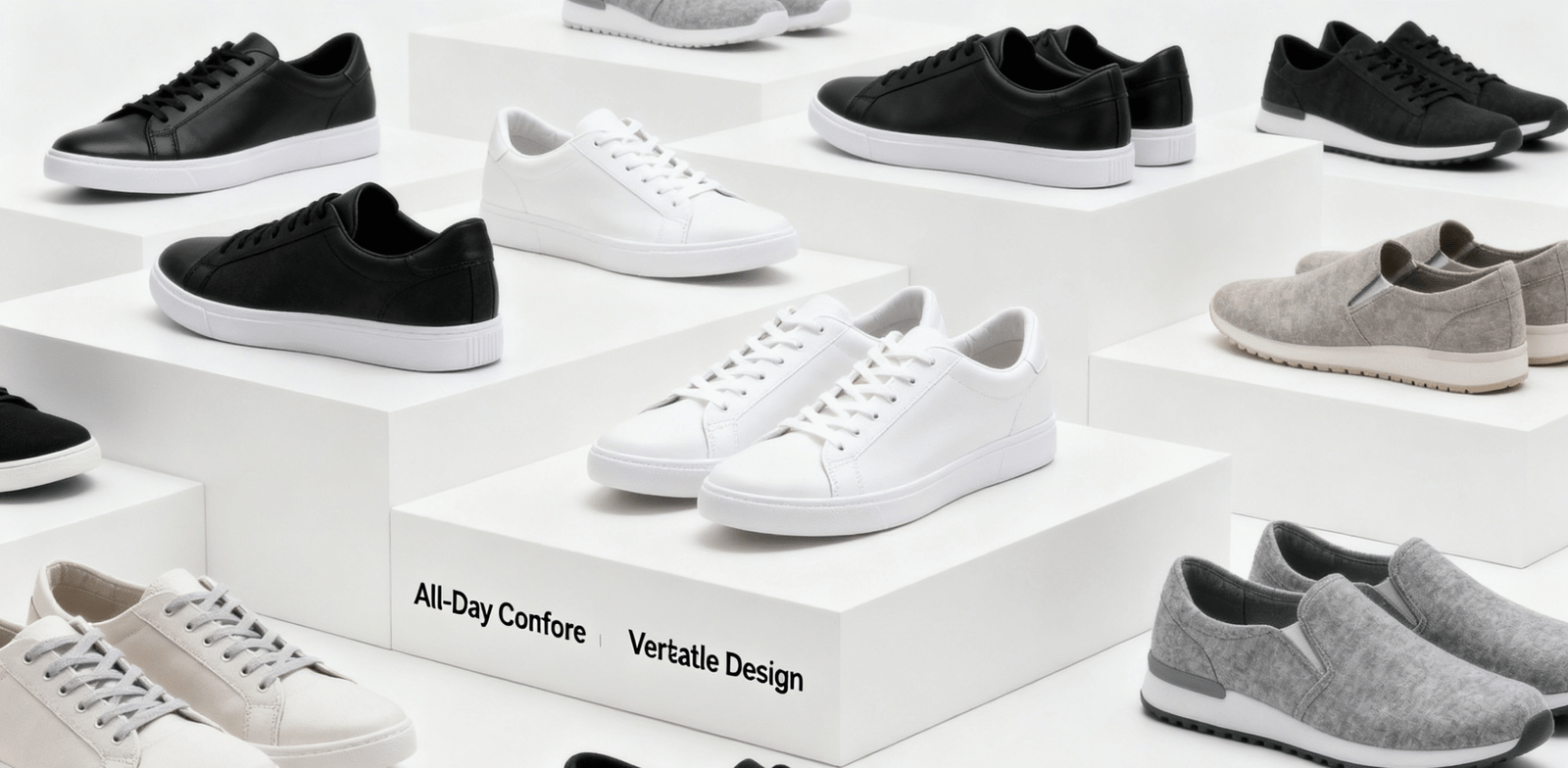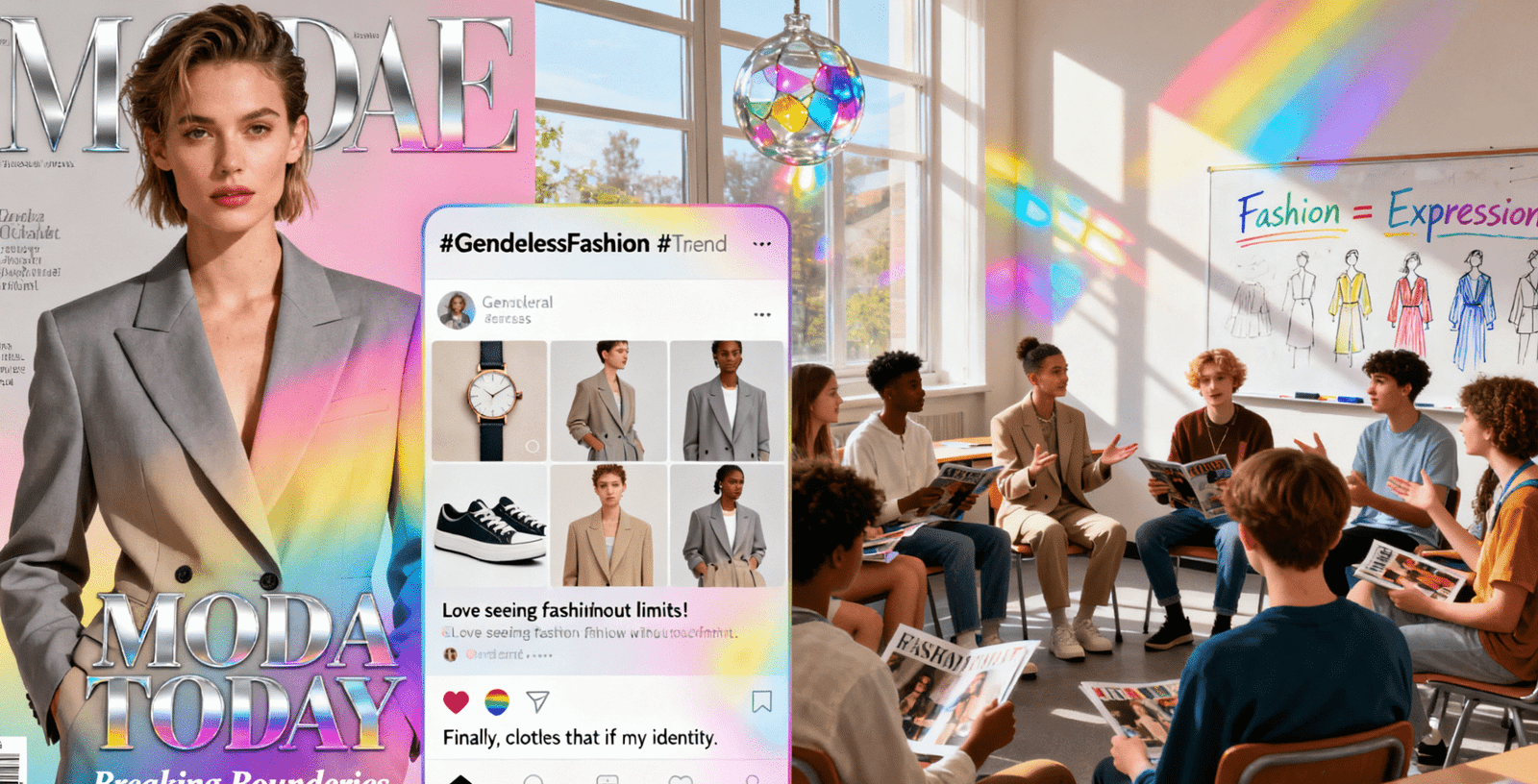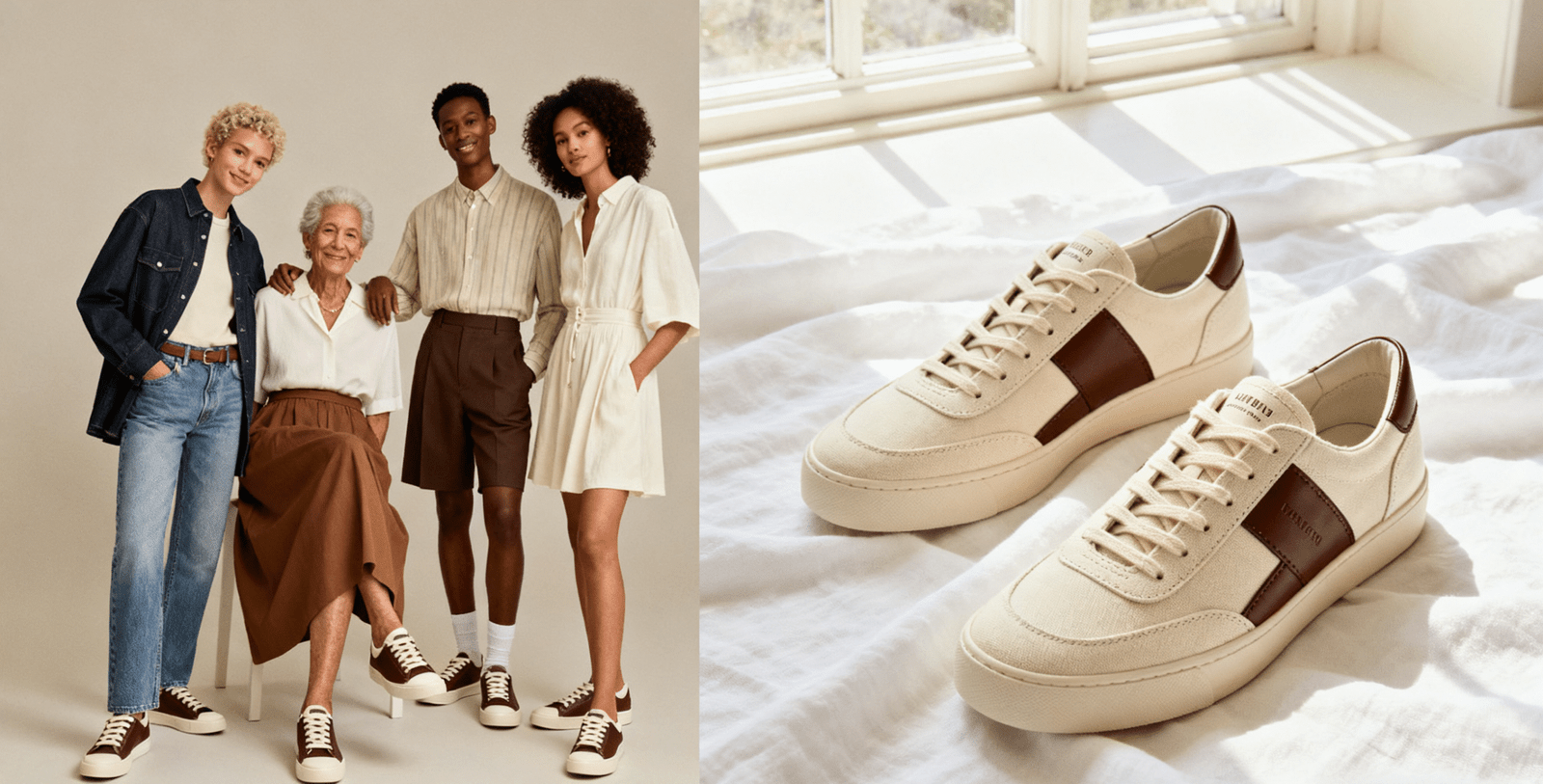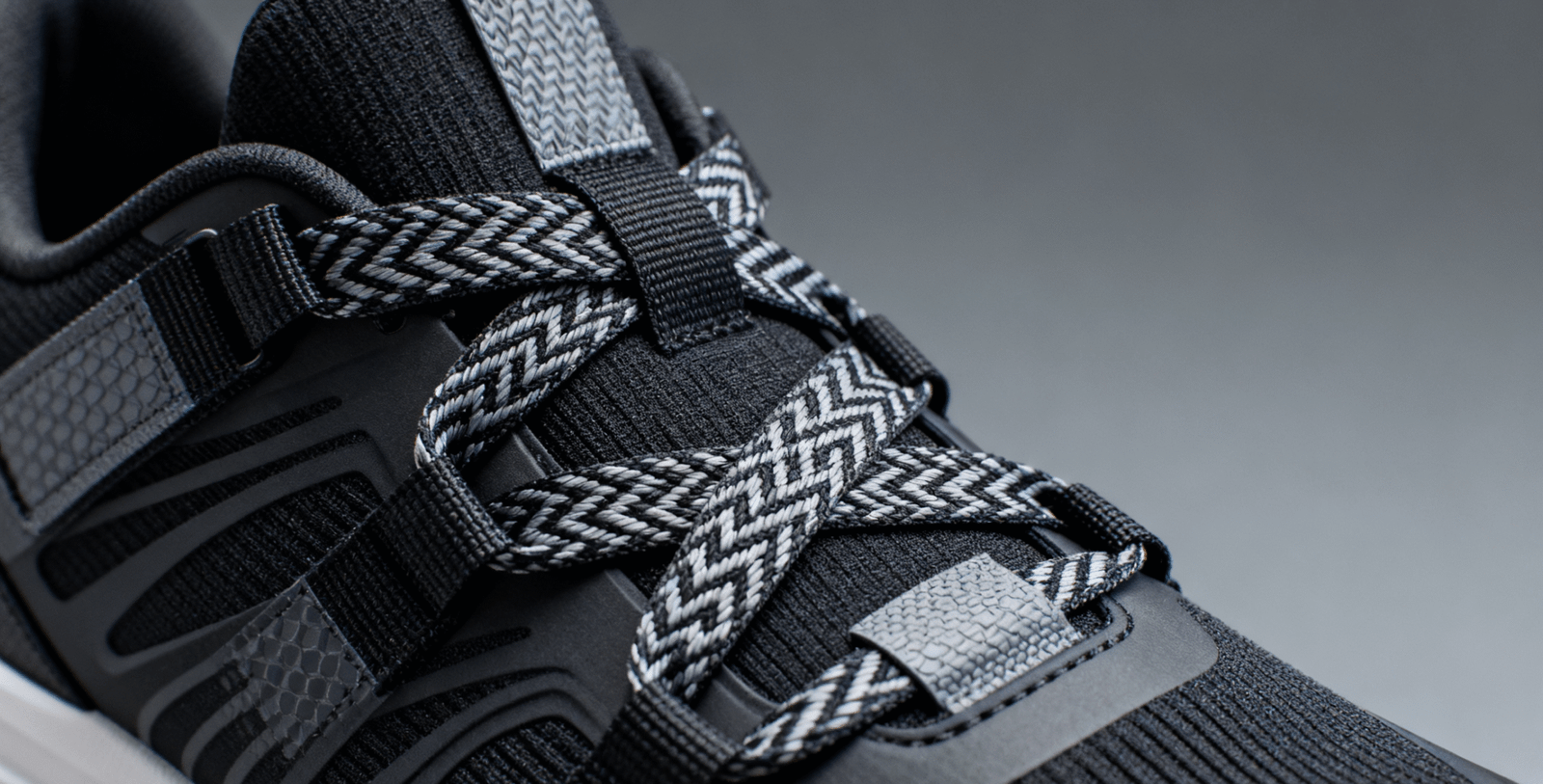Problem: For too long, the footwear industry has rigidly categorized shoes into "men's" and "women's" sections, limiting choices and perpetuating outdated gender norms for consumers seeking personal expression. Agitation: It's frustrating to find a style you love only to discover it's "not for your gender," or to feel forced into a binary choice that doesn't reflect your identity or fashion preferences. Solution: The rise of gender-neutral footwear is breaking down these prescriptive barriers, offering a liberating approach to design and consumption that prioritizes individual style and comfort over traditional gendered expectations.
Gender-neutral footwear designs are gaining significant traction by offering styles that transcend traditional male and female categories, focusing instead on universal aesthetics, comfort, and versatile appeal. This trend reflects a broader societal shift towards inclusivity and individual expression, allowing consumers to choose shoes based purely on personal preference rather than gender assignment. While not always a complete overhaul of design, it emphasizes shared styles, neutral palettes, and inclusive sizing to cater to a diverse consumer base.
 In my 25 years at Lucas, I've witnessed the constant evolution of footwear trends. What's truly exciting about gender-neutral shoes is that it's not just a trend; it's a reflection of deeper societal changes, a conscious move towards more inclusive design.
In my 25 years at Lucas, I've witnessed the constant evolution of footwear trends. What's truly exciting about gender-neutral shoes is that it's not just a trend; it's a reflection of deeper societal changes, a conscious move towards more inclusive design.
How Do Cultural Attitudes Shape Acceptance of Gender-Neutral Fashion? Problem: While the fashion industry pushes for gender-neutrality, societal and cultural norms often lag, creating a disconnect between design aspirations and widespread consumer acceptance. Agitation: You might wonder why, despite growing calls for inclusivity, gendered clothing and shoes remain deeply entrenched in many retail spaces and mindsets, making it challenging for gender-neutral styles to truly take hold. Solution: Cultural attitudes, deeply rooted in historical gender roles and societal expectations, significantly shape the acceptance of gender-neutral fashion; however, evolving perspectives on identity, individuality, and sustainability are increasingly fostering an environment where these inclusive designs can flourish.
Cultural attitudes profoundly influence the acceptance of gender-neutral fashion, as traditionally rigid gender roles have long dictated what is considered appropriate attire for men and women. Societies with more traditional values may be slower to adopt gender-neutral styles, as they challenge established norms. Conversely, cultures embracing individualism, diversity, and fluid identities are more open to genderless fashion, viewing it as a natural expression of personal freedom and a rejection of outdated binaries. Media representation, celebrity influence, and educational efforts also play a crucial role in normalizing and promoting these inclusive trends.

At Lucas, when we design for different markets, we always consider the local cultural nuances. What's accepted in one region might be revolutionary in another. Authenticity and understanding are key to successful product adoption.
Influences of Cultural Attitudes
- Historical Gender Roles:
- For centuries, clothing and footwear were explicit markers of gender identity. Specific garments and shoe styles were assigned to men versus women. This created deeply ingrained cultural associations.
- Impact on Acceptance: Challenges to these traditional roles can be met with resistance in cultures where gender conformity is highly valued.
- Media Representation:
- How gender-neutral fashion is portrayed in mainstream media (movies, TV, advertising) shapes public perception. Positive and diverse representation helps normalize and destigmatize these styles.
- Impact on Acceptance: A lack of representation or negative portrayals can hinder acceptance and reinforce traditional views.
- Generational Shifts:
- Younger generations (Gen Z, Millennials) tend to be more open to gender fluidity and individual expression. They are less bound by traditional norms compared to older generations.
- Impact on Acceptance: As these generations gain purchasing power, their progressive attitudes drive market demand for gender-neutral options.
- Social Movements and Identity Politics:
- Movements advocating for LGBTQ+ rights, body positivity, and individual freedom directly influence fashion. They challenge binary constructs.
- Impact on Acceptance: These movements foster environments where fashion is seen as a tool for self-expression rather than strict categorization.
- Economic Factors and Globalization:
- Globalization exposes diverse cultural perspectives. This expands fashion choices. Economic shifts can also contribute.
- Impact on Acceptance: Increased global awareness breaks down insular views on gender and dress codes.
- Sustainability Consciousness:
- Gender-neutral collections can sometimes be perceived as more sustainable. They reduce the need for separate production lines. They simplify inventory.
- Impact on Acceptance: For environmentally conscious consumers, this adds another layer of appeal beyond just gender inclusion.
Ultimately, cultural attitudes are not static. As societies evolve, so does their collective comfort with challenging traditional norms. This gradual shift creates fertile ground for the growing acceptance of gender-neutral fashion.
Cultural Influence on Gender-Neutral Fashion Acceptance
| Cultural Factor | Impact on Acceptance of Gender-Neutral Fashion | Examples of Manifestation |
|---|---|---|
| Traditional Gender Roles | Negative: Strong adherence limits adoption, views gender-neutrality as challenging norms. | Segregated store sections, social stigma for cross-gender dressing. |
| Individualism & Self-Expression | Positive: Cultures prioritizing personal choice embrace diverse styles. | Rise of streetwear, custom fashion, celebrity endorsements of gender-fluid looks. |
| Generational Attitudes | Positive: Younger generations (Gen Z, Millennials) more open to fluidity. | Gen Z driving demand for inclusive brands, social media trends showcasing non-binary fashion. |
| Media Representation | Varied: Normalizes if positive, hinders if absent or negative. | Gender-neutral models in campaigns, TV characters embracing diverse styles. |
| Social Justice Movements | Positive: Activism for LGBTQIA+ rights breaks down binary fashion norms. | Brands partnering with LGBTQIA+ organizations, collections supporting inclusivity. |
| Sustainability Focus | Positive: Perceived efficiency of neutral collections appeals to eco-conscious consumers. | Brands promoting "buy fewer, buy better" with versatile, non-gendered pieces. |
Are Luxury Brands Embracing Gender-Neutral Shoe Designs? Problem: While fast fashion and streetwear brands have increasingly dabbled in gender-neutral designs, the luxury sector often feels more entrenched in traditional gendered aesthetics, leading to questions about its willingness to adapt. Agitation: You might wonder if high-end fashion, with its emphasis on exclusivity and traditional craftsmanship, is too slow to embrace inclusivity, leaving a gap for consumers seeking gender-neutral options in premium footwear. Solution: Yes, a growing number of luxury brands are indeed embracing gender-neutral shoe designs, reflecting a strategic response to evolving consumer demands for inclusivity and a desire to tap into a broader market demographic without compromising on their commitment to quality and sophisticated aesthetics.
Yes, luxury brands are increasingly embracing gender-neutral shoe designs, though often subtly, by releasing core styles in broader size ranges, adopting more minimalist or universally appealing aesthetics, and featuring diverse models in their campaigns. This shift is driven by a recognition that affluent consumers, particularly younger generations, value inclusivity and seek authentic self-expression beyond traditional binaries. While some brands offer explicitly "genderless" collections, many integrate the concept by blurring lines with shared classic silhouettes like sneakers, loafers, or boots, presented simply as "shoes" rather than strictly "men's" or "women's."

As a manufacturer working with diverse brands, we've seen this shift firsthand. Luxury clients are asking for broader size runs on classic styles and exploring designs that appeal to a wider audience, all while maintaining their high standards for materials and craftsmanship. It's an exciting challenge.
How Luxury Brands Are Embracing Gender-Neutrality
- Expanded Size Ranges:
- Many luxury brands are quietly expanding the size runs of popular "men's" or "women's" styles. This allows anyone to purchase them.
- For instance, a classic men's loafer might now be available down to a women's size 5. A women's iconic boot might be available up to a men's size 12.
- Universal Aesthetic Focus:
- Concentrating on designs that inherently appeal across genders. Think clean lines, minimalist designs, classic silhouettes (e.g., Chelsea boots, sleek sneakers, certain types of loafers).
- Neutral color palettes (black, white, grays, earth tones) are often favored. This helps to de-gender the product.
- "De-gendering" Marketing and Presentation:
- Presenting shoes in non-gender specific ways. Using gender-fluid models in campaigns. Displaying shoes together rather than in "men's" or "women's" sections in stores.
- This subtle shift in communication allows the consumer to self-select.
- Dedicated Gender-Fluid Collections (Less Common but Growing):
- Some avant-garde or more progressive luxury brands are launching explicit "genderless" or "unisex" collections. These are designed from the ground up to be inclusive.
- Examples include brands like Maison Margiela, J.W. Anderson, or some avant-garde designers within the luxury sphere.
- Sustainability and Longevity Narratives:
- Luxury brands often emphasize longevity, craftsmanship, and investment pieces. Gender-neutral shoes fit this narrative perfectly.
- A timeless, well-made shoe that transcends fleeting trends and gender boundaries can appeal to a wider, conscious consumer base.
- Responding to Consumer Demand:
- Younger, affluent consumers are increasingly rejecting traditional gender norms. Luxury brands are adapting to capture this segment. They risk falling behind if they don't.
While luxury brands may not always shout "gender-neutral" from the rooftops, their actions in terms of product offering, sizing, and marketing strategy clearly indicate a growing embrace of more inclusive approaches to footwear design and sales.
Luxury Brands & Gender-Neutral Footwear Adoption
| Strategy/Approach | Description | Examples of Brands / Trends | Impact on Market |
|---|---|---|---|
| Expanded Size Ranges | Producing "men's" styles in smaller sizes and "women's" styles in larger sizes. | Gucci loafers (now available for wider foot range), Prada sneakers. | Allows wider customer base access to iconic styles. |
| Universal Aesthetic | Focusing on classic, minimalist, or androgynous designs that appeal across all genders. | Saint Laurent Chelsea boots, Bottega Veneta Puddle boots, common luxury sneakers. | Shifts focus from gender to design and quality. |
| De-gendered Marketing | Using gender-fluid models, mixed-gender editorials, non-binary product descriptions. | Celine (Hedi Slimane's collections), various runway shows. | Normalizes gender-neutrality, broadens appeal. |
| Classic Silhouettes | Leaning into timeless styles that inherently lack strong gender associations (e.g., combat boots, simple sneakers, some loafers). | Dr. Martens (luxury collaborations), certain Common Projects styles. | Emphasizes heritage and longevity over fleeting gender trends. |
| Specific "Unisex" Lines | Explicitly designing and marketing collections as gender-neutral from inception. | Maison Margiela's Tabi, some avant-garde designer capsules. | Direct appeal to consumers seeking explicit gender fluidity. |
| Sustainability & Longevity | Promoting pieces that are timeless, durable, and not constrained by seasonal/gender trends. | Many high-end brands emphasizing craftsmanship and investment pieces. | Appeals to eco-conscious and value-driven affluent consumers. |
How Do Sizing and Fit Work for Unisex Footwear? Problem: One of the most practical challenges in creating and purchasing gender-neutral footwear is the fundamental difference in foot shape and size distribution between men and women, leading to potential fit issues. Agitation: You might wonder how a single sizing system can accommodate anatomical variations, leaving you concerned that "unisex" might mean a compromised fit that’s neither truly comfortable nor supportive for either traditional men's or women's feet. Solution: Sizing and fit for unisex footwear are managed through standardized conversion charts (e.g., EU sizing), careful consideration of last (shoe mold) design to accommodate average foot shapes, and a focus on adjustable constructions to ensure comfort and universal wearability.
Sizing and fit for unisex footwear are primarily managed by using universal sizing systems like EU or CM, which eliminate gender-specific numbering. Brands often design around a "medium" or "average" foot last that accommodates commonalities in male and female foot shapes, rather than specific gender norms. To further enhance fit, unisex designs often incorporate adjustable elements like laces, straps, or flexible materials, ensuring comfort and adaptability for a wider range of foot anatomies. Consumers typically reference conversion charts or measure their foot length to find their corresponding unisex size.

When we develop shoes at Lucas, fit is paramount. For unisex styles, it’s a careful balance of designing a last that's universally comfortable and providing clear sizing guidance. A great design means nothing if the fit isn't right.
Sizing and Fit Strategies for Unisex Footwear
- Universal Sizing Systems:
- The most common approach is to use a universal sizing system like European (EU) sizing, or sometimes Centimeters (CM).
- These systems are numerical and do not have inherent gender associations. You simply find your foot length or standard EU size.
- Example: A shoe might be labeled "EU 36-46" rather than separate "men's" and "women's" sizes.
- Conversion Charts:
- Brands provide clear conversion charts. These charts help customers convert their familiar US or UK gender-specific sizes into the brand's unisex size.
- It's crucial for customers to measure their foot length (heel to longest toe) and width for the most accurate fit.
- Last (Shoe Mold) Design:
- This is the core of unisex fit. Traditional "men's" lasts are often wider in the forefoot and heel, and "women's" lasts are narrower.
- Unisex footwear designers use a specifically engineered "unisex last" or "gender-neutral last." This last represents a common average. It balances the anatomical differences between typical male and female feet.
- It might feature a moderate width and volume throughout. This accommodates a broader range of foot shapes.
- Sometimes, specific styles (e.g., sneakers vs. dress shoes) will have slightly different last considerations.
- Adjustable Features:
- Incorporating adjustable elements helps fine-tune the fit for various foot shapes.
- Examples: Laces (allowing for tightening/loosening), adjustable straps, elastic gore, or flexible upper materials that stretch and mold to the foot.
- Footbed/Insole Considerations:
- Some unisex shoes might use a more standardized, less contoured insole. This can accommodate a wider range of arch types.
- Removable insoles allow for custom orthotics. This further enhances personalized fit.
- Material Choice:
- Softer, more pliable upper materials (e.g., certain leathers, knit fabrics) can offer more forgiveness in fit. They adapt to the wearer's foot shape over time.
- This compensates for minor discrepancies in last design.
While it's impossible for one shoe to perfectly fit every single foot, the combination of universal sizing, thoughtfully designed lasts, and adjustable features allows quality unisex footwear to provide a comfortable and supportive fit for a very broad demographic.
Unisex Footwear: Sizing & Fit Solutions
| Challenge/Area | Traditional Gendered Footwear Approach | Unisex Footwear Approach | Benefits of Unisex Approach |
|---|---|---|---|
| Sizing System | Separate US/UK sizing for Men vs. Women (e.g., M10 vs. W11.5). | Universal Numerical Systems: EU, CM, or a single numerical sequence. | Simplifies purchasing, removes gender bias from selection. |
| Foot Anatomy (Last Design) | Gender-specific lasts (men's wider heel/forefoot; women's narrower). | "Neutral" or "Average" Last: Designed to accommodate commonalities across genders. | Broadens appeal, focuses on comfort vs. stereotyped fit. |
| Width & Volume | Often distinct width options (e.g., B, D, E for men/women). | Often a single, mid-range width/volume, or slight adjustability. | Reduces complexity, appeals to average foot. |
| Adjustability | Varies by style. | Prioritized: Laces, straps, elastic gussets for custom fit. | Enhances comfort & adaptability for diverse foot shapes. |
| Consumer Guidance | Rely on traditional size knowledge. | Crucial Conversion Charts: Clear guidelines based on foot length. | Empowers consumers to find best fit based on measurements. |
| Aesthetic Preferences | Distinct designs for men/women. | Focus on minimalist, classic, or versatile designs. | Appeals to individual style preferences, not just gender. |
| Target User | Binary consumer base. | Inclusive consumer base, enabling cross-gender wear. | Larger market potential, aligns with modern values. |
The rise of gender-neutral footwear signifies a powerful shift towards fashion that truly embraces individuality and comfort over outdated societal norms. Cultural attitudes are slowly but surely paving the way for wider acceptance. Luxury brands themselves are subtly adopting these inclusive designs by broadening size ranges and focusing on classic aesthetics. While sizing and fit present a pragmatic challenge, careful last design, universal measurement systems, and adjustable features are making gender-neutral shoes increasingly comfortable and universally wearable for everyone.
